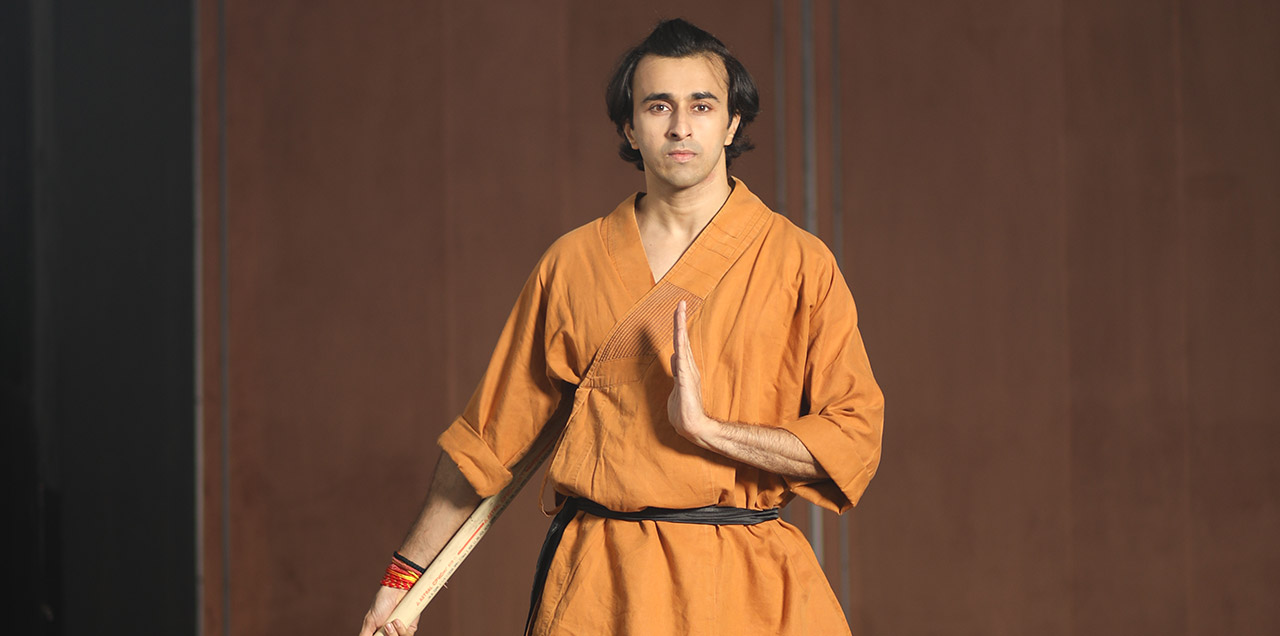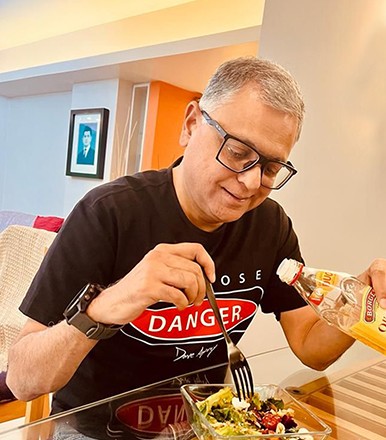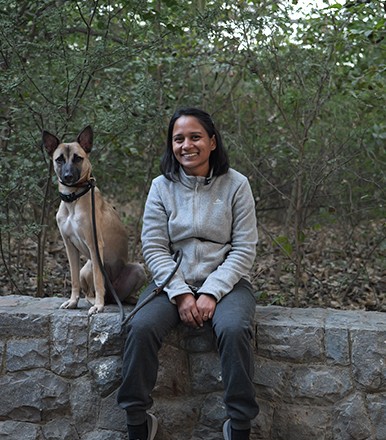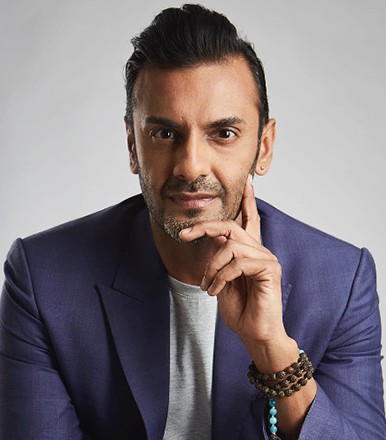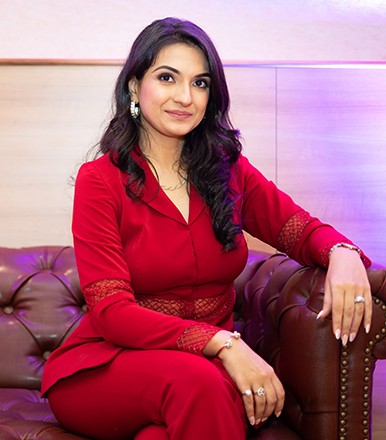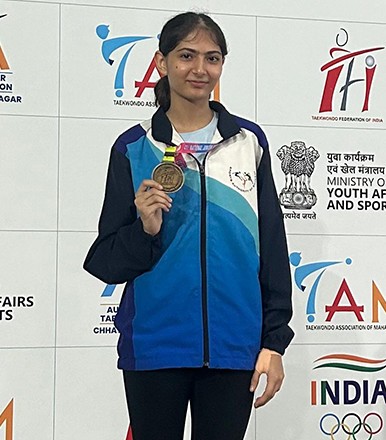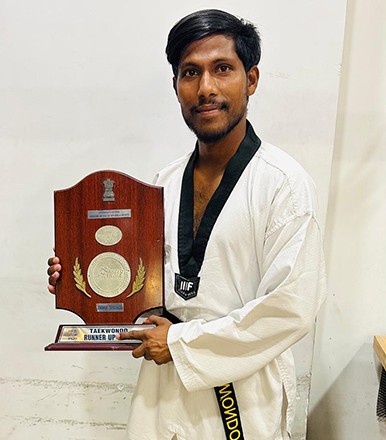You must be familiar with the story of Doctor Strange from the Marvel universe—a man whose life takes a sharp turn after a devastating injury, leading him to a distant land in search of healing. In his quest, he stumbles upon wisdom far more significant than anything he could have imagined, transforming his body, mind, and spirit.
But what if I told you such stories aren’t confined to comic book pages? Right here, in our world, we have a figure whose journey mirrors that of Doctor Strange—Harshh Verma, the first Indian to be adopted as a Shaolin Warrior Monk. Much like the Marvel hero, Harshh’s story begins with a promising life in sports that gets derailed by a debilitating injury.
Desperate for healing, his path led him not to Kamar-Taj but to the revered Shaolin Temple in China. And just like in fiction, what he found there was far greater than physical recovery—it was a life-changing experience that shaped his mind and spirit, eventually turning him into a Shaolin monk.
But the question remains: What does it mean to be a Shaolin monk in today’s world? How do you balance ancient practices with the demands of modern life?
These are the kinds of questions Harshh’s journey invites us to explore. His story is not just about martial arts; it’s about personal growth, resilience, and discovering one’s true self when faced with adversity.
At HFM, we always aim to bring you stories that inspire and uplift. Today, we present to you the incredible journey of Shaolin Warrior Monk Harshh Verma.
Journey to the East
Harshh Verma’s journey to becoming a Shaolin Warrior Monk is nothing short of awe-inspiring. He spent over five years immersed in the disciplined life of the Shaolin Temple, training rigorously to earn the title and embracing the wisdom and practices passed down through centuries.
Those five years of relentless commitment have shaped him into the person he is today, allowing him to achieve not only physical mastery but also profound spiritual growth. His journey stands as an inspiration to anyone who strives for greatness through perseverance.
However, things were not always the same. There was a time when Harshh was unknown to the world of Shaolin and lived a completely different life. As an avid athlete and a rising football sensation, he saw himself making it big in sports.
His dreams were abruptly halted, though, when he was diagnosed with osteochondroma, a rare condition in his knee. Following surgery, Harshh discovered a malignant tumor that required removing part of his thigh muscle.
The ordeal left him bedridden for over six months, a period marked by depression and frustration as he tried various treatments with little success. His search for healing eventually led him to Chinese medicine, which brought him to the Shaolin Temple. It was here, amidst the serene hills of China, that Harshh found physical healing and a deeper spiritual calling.
Being a Shaolin Warrior Monk
Harshh Verma made history by becoming the first Indian to be adopted as a Shaolin Warrior Monk at the renowned Shaolin Temple in China. In a space where centuries of tradition are passed down through the generations, being recognized and embraced by the temple not only highlights Harshh’s commitment but also places him among the elite few who embody the true spirit of Shaolin.
The title of a monk is never easy to attain though. It requires one to understand the balance between the hard and soft attributes of monk life. Therefore, this title carries a profound responsibility and honor. But it was not something that Harshh sought when he first arrived at the temple. Far from it, his interest was only limited to the medicine section that would cure his leg.
Hence, we had to ask what the title meant to Harshh, to which he replied: “Being a warrior is all about courage, respect, responsibility, and above all else, being compassionate and aware of yourself and what you give to people.”
As a warrior monk, he learned the sacred art of Shaolin, a discipline that requires physical and mental strength. This philosophy has become an integral part of his life today, further helping him attain a balance between combat strength and meditative reflection.
“This title means the world to me,” says Harshh, further explaining that it came naturally to him, even when it was bestowed upon him.
His being adopted as a Shaolin warrior monk was made possible by the commitment and respect Harshh showed toward their language, culture, and practice. It also enabled him to stay at the temple for a longer period and allowed him to hone his skills and acquire new ones in the form of Zen archery.Retaining monkhood in modern life
Retreating from the sacred halls of the Shaolin temple to the bustling life of a modern city can be a real challenge for someone who has spent over half a decade training as a monk.
After spending years in the disciplined environment of the Shaolin Temple, where every moment was dedicated to self-cultivation and martial arts, Harshh now resides in a metropolitan city, navigating the complexities of urban living. Despite the stark contrast between the two settings, he managed to retain the essence of monkhood in his daily routine. Let us understand how.
One of the biggest teachings that Harshh finds relevant in modern life is that “the first battle is always with oneself, and that true discipline comes from within.” This philosophy has acted as a guiding light to maintain a balance between his daily practices and his spiritual practices.
Harshh admits that life at the temple was relatively easier, with practice and chores being his primary daily activities. Now, he is pulled from different directions, yet he manages to regain his focus despite all the hurry. This has been made possible only by the awareness of his breath—a practice that helps him keep a level head when navigating modern life.
Living in the city has altered his routine a lot. Still, he manages to find time for his practice. “I might not be able to dedicate 10 hours to training every day, but I manage to train three hours daily.” His consistency has helped him maintain the discipline ingrained in him during his stay at the temple.
Despite the inevitable distractions of urban life, Harshh has prioritized keeping his mind in check. He consciously avoids indulging in habits that could compromise his health or mental clarity. This commitment to self-discipline is not just about physical well-being but is deeply tied to the Shaolin philosophy of maintaining harmony between the mind, body, and spirit.
Harshh acknowledged, “There are days when I relapse and struggle to maintain the balance.” However, he manages to draw strength from the teachings of Shaolin, particularly compassion and empathy, which he practices not only on others but also towards himself. This practice saves him from slipping into guilt or getting frustrated. Instead, he approaches these moments with mindfulness to gently bring himself back to practice.
In essence, Harshh Verma has managed to retain his monkhood by integrating the teachings of Shaolin into his modern life. While his surroundings have changed drastically, the principles that guided him as a monk continue to influence his actions and decisions.
Giving Back to the Community
Giving back to the community is a core teaching of Shaolin, and Harshh embodies this principle through his work in India. In an attempt to give back to the community that has made him the person he is today, he founded the Shaolin Temple Cultural Centre of India in Mumbai, which shares the teachings and practices of Shaolin with the new generation.
Through this school, Harshh aims to spread the cultural values of Shaolin—empathy, compassion, discipline, and respect for all beings. The academy offers traditional Shaolin practices like martial arts, meditation, and breathwork, ensuring these ancient teachings continue to thrive in a modern context.
Beyond this academy, he also conducts workshops and outreach programs and partners with schools and corporations to promote mindfulness and well-being in everyday life through these practices. For him, this is not just about preserving a culture; it’s about creating a community that values and practices the principles of Shaolin in every aspect of life.
Aspirations for the future
Harshh Verma has bold aspirations for the future. He aims to elevate the quality of action in Indian cinema, bringing the raw, authentic style seen in the films of legends like Jackie Chan and Bruce Lee, rather than the heavily choreographed sequences prevalent in Bollywood. Harshh wants audiences to experience action that feels real and intense, with the hope of establishing himself as “India’s next big action hero.”
He has already kick-started his career in the film industry. Currently, he is working on an undisclosed project in South India, showcasing his skills and passion for action on screen. While the details of this project remain under wraps, his ultimate aim is to revolutionize action in Indian cinema.
Beyond the world of cinema, he is also penning a book that blends autobiographical elements with self-help insights. While it touches upon his journey and the cultural wisdom he has gained, the book’s primary focus is on cultivating a warrior mentality. Through this work, Harshh seeks to inspire readers to adopt principles of resilience, discipline, and inner strength, offering them the tools to face life’s challenges with the same mindset that helped him transform his own life.
Harshh Verma’s journey is a living testament to the power of discipline, resilience, and mindfulness. While his time at the Shaolin Temple profoundly shaped him, his ability to apply those teachings in modern life truly set him apart. By integrating Shaolin principles into his everyday routine and sharing them through his work in India, Harshh has built a bridge between ancient wisdom and contemporary life. His story reminds us that, regardless of circumstances, the key to growth and fulfillment lies in self-awareness and the desire to give back to the world around us.




